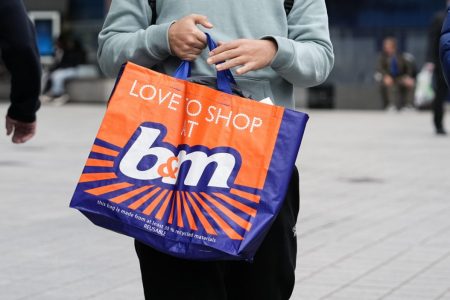Next, a prominent high street fashion retailer, has forecasted a rise in consumer prices due to the government’s recent tax increases. The company anticipates a £67 million surge in staff costs in the upcoming year, a portion of which will inevitably be passed on to shoppers through a projected 1% price hike. This increase is primarily attributed to the impending rise in employer National Insurance contributions (NICs), a measure announced in the previous Autumn Statement and slated to take effect in April. Concurrently, an increase in the national minimum wage will further compound Next’s cost burden, contributing to the overall pressure on retail prices. While the company reported stronger-than-expected sales growth in the recent quarter, its outlook for the coming financial year is more cautious, predicting slower sales growth and a more modest profit increase.
Next’s warning echoes concerns voiced across the retail sector. The British Retail Consortium estimates the combined impact of the NICs increase and minimum wage hike will create a £2.3 billion bill for the industry. The increase in NICs, calculated as a percentage of employee earnings above a certain threshold, will significantly impact businesses with large workforces. The simultaneous rise in the minimum wage, particularly affecting younger workers, adds another layer of complexity to retailers’ cost management strategies. These converging pressures are anticipated to ripple through the economy, impacting both prices and employment levels. Experts like Charlie Huggins of Wealth Club predict that other retailers will likely follow Next’s lead in raising prices, exacerbating inflationary pressures and potentially dampening consumer spending.
The retail sector is facing a challenging confluence of rising costs, squeezed margins, and dwindling consumer purchasing power. While Next is considered relatively well-positioned to navigate these turbulent waters, smaller retailers may be particularly vulnerable. The Centre for Retail Research (CRR) paints a stark picture, forecasting a wave of store closures and job losses in the sector. This follows a difficult 2024, which saw a significant increase in store closures and job losses compared to the previous year. The CRR attributes this trend to a combination of factors, including the economic downturn, rising costs, and the ongoing shift towards online shopping.
The impending tax and wage changes are not only impacting the retail industry but are also sending ripples across other sectors. The British Chambers of Commerce reports that over half of the companies surveyed plan to increase prices in the coming months, primarily driven by rising employment costs. This widespread price escalation is creating what Shevaun Haviland, the group’s director general, describes as a “pressure cooker of rising costs and taxes.” Businesses are expressing concerns about the cumulative burden of these changes, warning that they are being forced to cut back on investment and pass on increased costs to consumers.
The gravity of the situation is highlighted by an open letter to the Chancellor from over 70 businesses, including major supermarket chains like Tesco, Asda, and Sainsbury’s. They argue that the announced changes will inevitably lead to price hikes. Several businesses, including Greggs, Mitchells & Butlers (owner of Toby Carvery), and Wetherspoons, have already publicly acknowledged the likelihood of price increases. These businesses, representing a diverse range of sectors, collectively underscore the pervasive nature of the cost pressures emanating from the government’s policies.
Across the board, businesses are grappling with the challenge of absorbing these increased costs. Some, like Halfords, are considering passing the higher wage costs to customers, while others, like Royal Mail, are exploring various options, including potential price increases and cost-cutting measures. Wetherspoons, while aiming to remain competitive, acknowledges the inevitability of price adjustments in the face of rising tax and business costs. Similarly, Sainsbury’s CEO warns of inevitable food price increases due to the inability of the low-margin grocery industry to absorb such significant cost inflation. AO World, an online electronics retailer, also anticipates the need for price increases and efficiency improvements to offset higher wage costs. These examples illustrate the widespread impact of the impending policy changes and the difficult decisions facing businesses across various sectors as they strive to navigate the increasingly challenging economic landscape.











